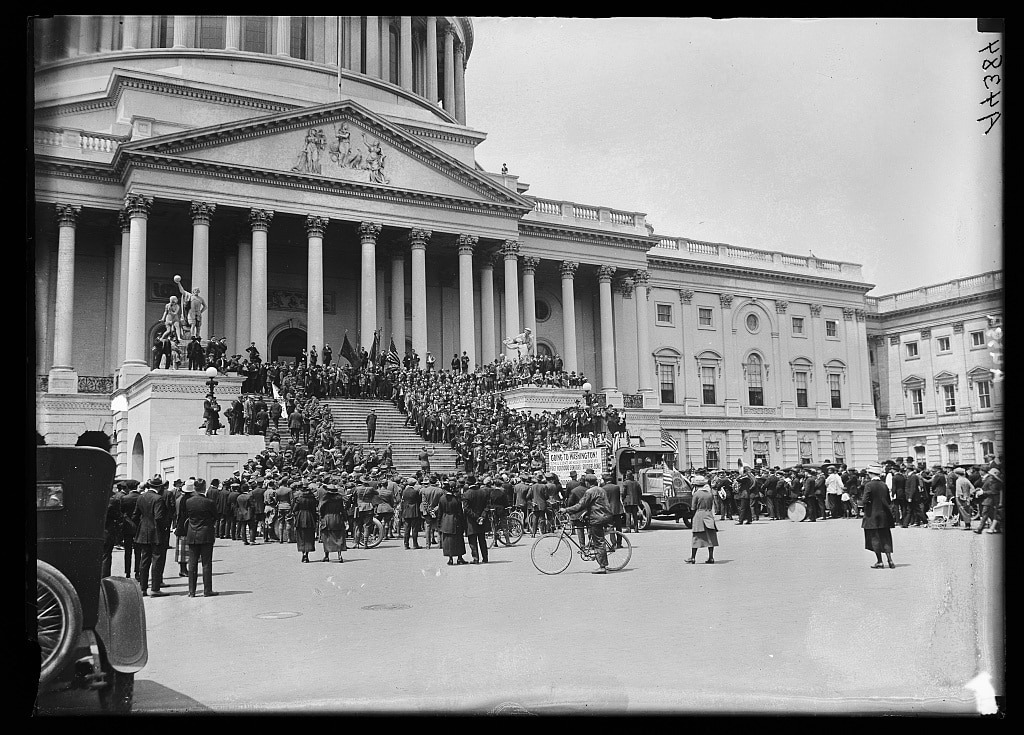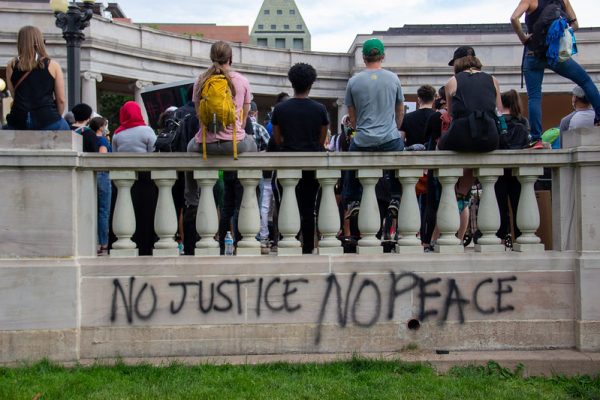Menthol in cigarettes has long been a scourge of our nation, particularly in communities of color. Disproportionately marketed to those communities, menthol has addicted millions to cigarettes, resulting in the deaths of hundreds of thousands. Black, Indigenous, Latino, and other minority groups have long pushed for its regulation, even its elimination, but their votes have been insufficient to move the federal government in the face of the tobacco lobby. Last week on April 29, however, the Food and Drug Administration (FDA) announced steps to begin banning menthol from cigarettes. This move comes after a surprising source of inspiration and agenda-setting: a citizens’ petition.
The anti-menthol “citizens’ petition” was first sent to the FDA in 2013, after gathering support from a multiracial alliance whose aim was to force the menthol issue onto the agency’s agenda. The cosponsors included the African American Tobacco Control Leadership Council; Asian Pacific Partners for Empowerment, Advocacy and Leadership (APPEAL); the National African American Tobacco Prevention Network; and the National Latino Alliance for Health Equity. These organizations joined well-known public health and anti-tobacco groups—as well as local government organizations such as the National Association of County and City Health Officials and the American Academy of Pediatrics—to foreground the immense human cost of mentholated cigarettes.
Whatever the outcome of the FDA’s menthol ban (and the federal courts will have their say), the citizens’ petition is nonetheless remarkable. It breaks markedly from the contemporary culture of grievance in the United States. Expressed in fury or in lawsuits, “grievance” is all around us. Most visible in recent years has been the racialized variety—“white grievance”—entangled in fresh resentments and often vented in frenzied public outbursts seen on social media or at capitol buildings. Another more targeted and orderly mode of grievance comes in the form of formalized complaints, which are filed or taken to “grievance boards” or committees as written protests directed against employers or authorities. The anti-menthol petition is neither a lawsuit nor an agonistic tantrum. It is a public document: accessible, readable, and calmly argued. It takes inspiration from a long history of grievance and petitioning, while also departing from that tradition in significant ways.
Grievance in the contemporary United States is commonly expressed within a rage-or-tort model that has real benefits and serious costs. The rise of lawsuits and private grievance procedures has brought indispensable rights and successes that no one would willingly surrender. Online expression has also given a voice to many who lacked previous means of representation. Yet as traditional petitioning has disappeared, U.S. political culture has lost something valuable: a way of expressing grievances that requires substantive argumentation, invites public debate upon those complaints, and links the aggrieved to one another in person and empathically. The decline of collective memorials also means the loss of organizational webs that place matters before the consideration of the most important institutions of a democratic republic: our legislatures.
In the United States, democracy coevolved with our system of elections and parties, but it depended upon public grievance expression—in this democracy anybody’s grievances mattered. The weight of citizen grievance held whether or not the aggrieved were a majority or minority, already had an organization, or could mobilize lawyers. In this petition democracy, not only could the complaints of any citizen get a hearing, that hearing would occur publicly in the broadest representative body in the land. Today, even the FDA’s consideration of the anti-menthol petition occurred primarily out of public view. Over the long haul of U.S. political history, public petitions for redress of grievances lay at the core of what we call our democratic republic, an ideal defined by representative government, political equality, basic universal liberties, and the separation of powers. For this reason, petitioning, especially collectively, for the redress of grievances has long been a telltale indicator of the health of democracy.
Considering the long history of complaint in public life and politics, it should come as little surprise that the word “grievance” is itself quite old. It has long meant something far more capacious than bitter rage or a channeled, litigious complaint. Grievance descended from medieval French notions of burden and injury (grevance), which reflected Latin notions of heaviness (gravis), and eventually made its way into English politics and law.
The word “grievance” appears just once in the U.S. Constitution—in the First Amendment’s “Petition Clause,” which protects the right “to petition the government for redress of grievances.” Just as the anti-menthol petition soberly documents a multiracial coalition’s trauma, U.S. citizens once expressed their grievances primarily through petitioning. Today, however, this is the most neglected First Amendment right. Justice Amy Coney Barrett was unable to list petitioning as one of the rights protected by that Amendment at her confirmation hearings in October 2020. Every other First Amendment right (freedom of speech, religion, assembly, and press) is associated with a far more expansive jurisprudence.
The First Amendment right to petition came from a vibrant preexisting culture of North American petitioning that descended from medieval and early modern Europe and extended centuries of Indigenous diplomacy already present on the continent. Medieval kings, bishops, councils, lords, and parliaments all responded to petitions; the deliberative hearing of these petitions was, in fact, inseparable from the rise of parliaments and estates. By the 1500s at latest, petitions were accompanied by signatory lists growing into the hundreds, then thousands, of names. The powers of the English Parliament as a lawmaking body were defined in sixteenth- and seventeenth-century battles over whether the Crown’s redress of grievances communicated to and by Parliament should precede the “subsidy” of monies for the monarchy to administer. Much of the contest over the Stuart monarchy was a debate over whether and how a broader “petition of right” constrained the King.
In North America Indigenous peoples had been practicing a form of petitioning—formalized complaint-making, complete with documentation (wampum, for example) and tribal procedures—centuries before Europeans set foot on the continent. Political relations among clans and tribes were often managed through a kind of grievance procedure. In the Haudenosaunee (Iroquois) Confederacy, for instance, complainants presented the central council fire at Onondaga with their grievances, and council rulers took a day or two to reflect on them before responding. The tradition of grievance processes and diplomatic forms of petitioning among Native Americans may be why they petitioned the U.S. government as much as or more than any other population in the country’s first century.
After suffering mass atrocities and dispossession in the 1800s, Native Americans also used petitions to successfully defend their peoples and their cultures, carving out geographical spaces on which they could survive. Tribes—ranging from the Seneca Nation to the Ojibwe bands in the Great Lakes region, from the Innu of Canada to the Pueblo peoples in New Mexico—used petitions to fend off dispossession and protect small land holdings, many of which remain intact today. Even where their efforts were defeated, as with the Cherokee Nation, their arguments and canvassing methods left a model for other tribes to follow.
But tribes were not the only ones to make use of this form of political expression. In British North America, few forces were more important than grievance petitioning in the development of the colonial assemblies, such as Virginia’s House of Burgesses, with its powerful Committee of Propositions and Grievances. These assemblies, which functioned as the template for U.S. state legislatures (and in many ways, the U.S. Congress), created important committees to deal with petitions. In the 1700s anywhere from 40 to 60 percent of laws passed by the Burgesses started as petitions.
Far more than a right, the petition for redress of grievances was a ubiquitous cultural and political act in early U.S. history, and remained remarkably common until World War I. Before 1900, petitioning was even as or more common than voting for millions of Americans. For this reason, the early U.S. Congress was inundated with petitions to the point of breakdown. After the election of the Speaker, the House of Representatives usually spent much of the following month hearing and deliberating on memorials, with every other Monday devoted specifically to reading petitions. Many congressional committees and early federal government agencies were created to deal with petitions, while the rise of legislative hearings was prompted in part by citizens’ demands to be heard, particularly when citizens could not yet vote. Petitions and petitioning campaigns changed our politics, transformed our society, and empowered democracy in Canada, parts of Mexico, and the United States.
Historically petitioning had the most potential for change in the lives of marginalized and suppressed North Americans. North America still had forms of feudalism in the 1850s, with manorial land contracts hemming in indebted tenant farmers in New York and many farms still controlled by their seigneurs in French Canada (France had already abandoned feudal tenure in its revolution). Petitioning helped shape coalitions and set agendas for change (such as introducing rent taxation to the legislative calendar in New York, which forced landlords to the table to buy out their tenants’ contracts). For emerging U.S. political parties like the Whigs and the antislavery Liberty Party, petitioning provided crucial recruitment mechanisms that permitted new organizations to identify allies and invite them into more engaged participation.
Petitioning also facilitated and foreshadowed the growth of local antislavery chapters, the mass influx of women into the movement, and the surge of Black antislavery activism in states such as Massachusetts and New York. The U.S. antislavery movement itself is inseparable from petitioning. Black Americans and Caribbean people of color drew upon petitioning campaigns to place slavery on colonial, state, and national agendas. Petitions from men such as Prince Hall paved the way for the abolition of slavery in Massachusetts in the 1780s, while petitioning work by Caribbean men of color, ranging from Alexander Sympson of Jamaica to Jean Baptiste Philippe of Trinidad, set the agenda for civil equality laws in the British West Indies in the 1830s.
The use of petitioning was similarly indispensable to the women’s suffrage movement. In the 1840s and ’50s there were weak electoral reasons for New York, Pennsylvania, and Massachusetts to pass married women’s property laws that partially or fully ended coverture. However, petitioning by thousands of the states’ women (who launched the earliest and most coordinated campaigns for the vote) set the agenda for women’s suffrage. By the 1850s petitioning women across the United States were regularly doing something that was unheard of at the country’s founding. They appeared regularly, and by invitation, to testify in front of legislative committees. The United States had been created as a republic where women were “out of doors.” It was the petition that, beginning with Angelina Grimké’s address to the Massachusetts General Court in February 1838, brought women regularly and visibly within the halls of power decades before they had widespread voting rights.
If there was an exception to this efflorescence of petitioning for redress of grievances in the nineteenth century, it occurred in the U.S. South. By the 1850s memorials to Southern state legislatures crashed in raw numbers and in the breadth of topics introduced. The region simultaneously saw less collective petitioning by women than anywhere else on the continent, including venues in Canada and Mexico. As Southern Democrats converted their parties and state governments into entwined authoritarian machines, they restricted petitioning, agendas, and civil liberties. The asthmatic politics of racial authoritarianism would surface again in the 1890s under Jim Crow, as popular petitioning by Black people and many poor whites again cratered.
Collective petitioning to government bodies has all but disappeared in the United States. Declining sharply after World War I to just a trickle by World War II, petitioning was displaced by the complex of factors that have created our modern politics—by lawsuits, polling that gave politicians disembodied information on their constituents, partisan machinery for channeling wishes, lobbying, and the initiative and referendum. To be sure, no simplistic resurrection of the U.S. culture of petitioning is possible, and much of what has come to replace it has improved our lives and politics. There is nothing quite like a lawsuit to focus the attention of an organization that neglects its contracts, betrays its workers, or ignores its patterns of discrimination. The ability of workers or victims of sexual harassment to file grievances as opposed to supplicating for relief is an improvement.
Contemporary political movements use marches and traditional and social media to coordinate, with echoes of collective petitioning. As the legal scholar Ronald Krotoszynski has recognized, many of the most consequential activities of twentieth-century social protest, including the civil rights activism of the 1950s and ’60s, expressed the long culture of U.S. grievance petitioning. It is seldom remarked about the Selma march in March 1965, but the assembled marchers carried a petition written by the Southern Christian Leadership Conference (SCLC) to be presented to Governor George C. Wallace. Narrating “three centuries of suffering and hardship,” the SCLC petition declared that “we must have the right to vote; we must have equal protection of the law and an end to police brutality.” SCLC activists were under no illusion that Wallace was ready to grant these claims. As with past petition democratizers in the U.S. antislavery campaign or the anticolonial initiative in 1820s French Canada, their claims and complaints were addressed to a diverse audience. Nonviolent resistance, public marches, and civil disobedience have become critical tools of citizen empowerment, protected not just by the First Amendment generally, but by the Petition Clause specifically.
Legal protections, social movements, and low-cost access to expression are valuable. However, it is worth acknowledging what we lost with the decline of popular petitioning. We have lost effective institutions and cultures of complaint. We have lost practices of grievance expression that rely upon argument and appeal to empathy, mutual respect, and public deliberation. We have also lost institutions that establish legislative and policy agendas based partially upon citizen grievance.
The model of grievance that suffuses the United States today feeds antagonism. Though it might deliver results in court, it chokes off dialogue and leaves party and corporate elites in control of national agendas. Anger is a critical element of life and politics, but effective social movements have long channeled righteous indignation into withering argument, nonviolent resistance, and efforts aimed at transforming legislative and executive agendas. Much of U.S. grievance is now expressed anonymously and pseudonymously, seeks to inflame and threaten rather than to engage, and summons the attention span of a kitten. A culture of pseudonymous trolling does not enable effective, informed complaint.
Of particular concern is white grievance, fallacious in that it constructs a deceptive narrative of burden, imagined disadvantages in redress, and mythical deservingness of first-in-line status for government protection. But the other problem with white grievance is that it is organized and expressed in fury rather than in argument. Habits of rageful grievance, advanced and incited by rank sophistry, make food for demagogues. And as Michele Norris rightly noted in her Washington Post essay after the January 6 insurrection, millions of white Americans have long believed that rageful grievance is their birthright, while polite supplication is for Black folk, Indigenous citizens, and people of color in general. Though, of course, not all white Americans feel so entitled to rageful expression.
White grievance today rests not in empathic complaint or deliberation but in victimhood. There is little argumentation and no appeal to empathy or genuine lament. Instead, as the British scholars Alexandra Homolar and Ronny Scholz have recently characterized Trumpian grievance, “rational arguments or detailed policy proposals pale in comparison with the emotive pull and self-affirmation of an us-versus-them crisis narrative.” White grievance reverberates on the brief texts and videos of social media, primes its self-styled victims to turn to violence, and enables authoritarian party mechanisms for wresting power and voice from people of color, the working class, and the young.
Human grievances are genuine and redressing them is a critical part of any just political system. Even the millions of American who fall prey to furious white grievance have, as persons and communities, some justifiable complaints. They are hurt by economic policies that consistently favor the wealthy and sidelined by a cultural elitism rooted in race and space that openly despises non-metropolitan Americans (one reason that, in 2016, many Native Americans showed little enthusiasm for Hillary Clinton). Nor should the regression of grievance in the United States be confused with what conservatives wrongly entitle “grievance studies” among the left. Narratives are central to informative grievance, and Americans are fruitfully and justly telling new stories. Hearing and understanding the massive grievances rooted in structural racism and dispossession requires storytelling, just as previous advances in U.S. democratization—ranging from the revolt against monarchy in the American Revolution to the antislavery movement—have relied on re-narrating our past and repositioning our present.
Grievance as tort individualizes a set of burdens that are often commonly shared, and the judicial system has long been tilted against those with inferior access to lawyers. There is some evidence that class-action lawsuits can lead to mobilization and dialogue that mimics what we saw in the petitioning campaigns of an earlier time, but these examples are fleeting. And, of course, U.S. legislatures and courts are clamping down upon these tools even as I write.
What is missing from tort-or-rage grievance culture are two things that mass petitioning provided. The first is public argumentation. Courts, of course, have an abundance of argumentation, but the setting isn’t truly public, at least not in the best sense that it involves citizens. Part of our impoverishment comes from the feeble character of legislative debate, though the best of committee hearings still provides an exemplar of representative and deliberative democracy. Second, much of U.S. grievance fails to generate meaningful political organization—and not only electoral organization. As Theda Skocpol has observed, political organizations have become less membership-centered and much more management driven. Among many such “astroturf” organizations are a range of patient-advocacy groups whose energies are directed much more by biopharmaceutical companies than by mass patient populations. As Kay Schlozman and colleagues have also revealed, pervasive inequality in political voice persists in the United States and may even be growing.
The citizens’ petition against mentholated cigarettes resurrects some features of nineteenth-century petition democracy but lacks many others. Like the memorials of a time past, the anti-menthol petition represents a coalition emergent on paper, uniting African American, Latino, Native American, and Asian groups with public health professionals. Akin to those older memorials, it has reshaped the agenda of one of our most powerful government agencies in a way that inside lobbying has been unable to accomplish. Yet the anti-menthol campaign uses a very selective form of petitioning. Administrative citizens’ petitions are structured more by statutes than by enduring political norms. They are often driven by peak associations such as the signatories to the anti-menthol document. Moreover, citizens’ petitions as an administrative process depend heavily upon the involvement of lawyers at all stages of the process.
While administrative citizens’ petitions remain a valuable tool, robust democracy demands an enduring legislative petitioning process. Canada’s Parliament still receives and responds to over 1,500 paper petitions per year, and several hundred electronic petitions as well. New Zealand also has a vibrant petitioning system in which agendas are reshaped by the people’s memorials.
Neither a mobocracy nor an autocracy has need of the petition. Nor does a technocratic social democracy that places most agenda-setting power with professionals whose daily routines are far removed from public accountability. Nor does an institution-less libertarianism need the petition, as its sole path for betterment rests in some combination of torts and prices. The society most in need of what petitioning used to provide us is a democratic republic that seeks to hear its people’s just complaints, open the agenda of government to all of the people, and foster engaged citizens: in short, the United States.








